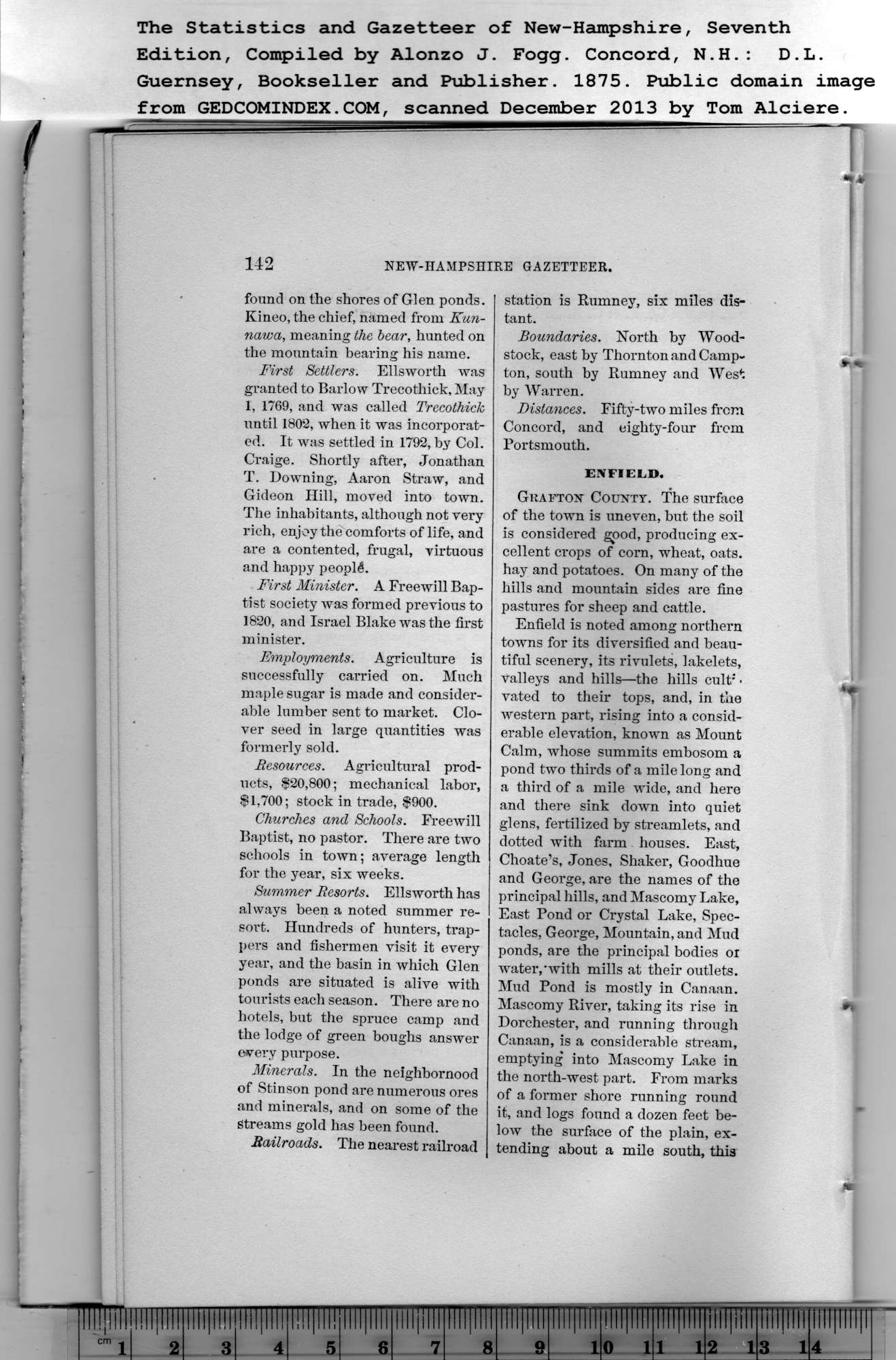|
found on the shores of Glen ponds.
Kineo, the chief, named from Kun-
nawa, meaning the bear, hunted on
the mountain bearing his name.
First Settlers. Ellsworth was
granted to Barlow Trecothick, May
1, 1769, and was called Trecothick
until 1802, when it was incorporat-
ed. It was settled in 1792, by Col.
Craige. Shortly after, Jonathan
T. Downing, Aaron Straw, and
Gideon Hill, moved into town.
The inhabitants, although not very
rich, enjoy the comforts of life, and
are a contented, frugal, virtuous
and happy peoplA
First Minister. A Freewill Bap-
tist society was formed previous to
1820, and Israel Blake was the first
minister.
Employments. Agriculture is
successfully carried on. Much
maple sugar is made and consider-
able lumber sent to market. Clo-
ver seed in large quantities was
formerly sold.
Resources. Agricultural prod-
ucts, $20,800; mechanical labor,
$1,700; stock in trade, $900.
Churches and Schools. Freewill
Baptist, no pastor. There are two
schools in town; average length
for the year, six weeks.
Summer Resorts. Ellsworth has
always been a noted summer re-
sort. Hundreds of hunters, trap-
pers and fishermen visit it every
year, and the basin in which Glen
ponds are situated is alive with
tourists each season. There are no
hotels, but the spruce camp and
the lodge of green boughs answer
every purpose.
Minerals. In the neighbornood
of Stinson pond are numerous ores
and minerals, and on some of the
Streams gold has been found. |
Railroads. The nearest railroad
station is Rumney, six miles dis-
tant.
Boundaries. North by Wood-
stock, east by Thornton and Camp-
ton, south by Rumney and West
by Warren.
Distances. Fifty-two miles from
Concord, and eighty-four from
Portsmouth.
ENFIELD.
Gkafton County. The surface
of the town is uneven, but the soil
is considered good, producing ex-
cellent crops of corn, wheat, oats,
hay and potatoes. On many of the
hills and mountain sides are fine
pastures for sheep and cattle.
Enfield is noted among northern
towns for its diversified and beau-
tiful scenery, its rivulets, lakelets,
Valleys and hills—the hills cult.*’ •
vated to their tops, and, in the
western part, rising into a consid-
erable elevation, known as Mount
Calm, whose summits embosom a
pond two thirds of a mile long and
a third of a mile wide, and here
and there sink down into quiet
glens, fertilized by streamlets, and
dotted with farm houses. East,
Choate’s, Jones, Shaker, Goodhue
and George, are the names of the
principal hills, and Mascomy Lake,
East Pond or Crystal Lake, Spec-
tacles, George, Mountain, and Mud
ponds, are the principal bodies oi
water,'with mills at their outlets.
Mud Pond is mostly in Canaan.
Mascomy River, taking its rise in
Dorchester, and running through
Canaan, is a considerable stream,
emptying into Mascomy Lake in
the north-west part. From marks
of a former shore running round
it, and logs found a dozen feet be-
low the surface of the plain, ex-
tending about a mile south, this |
